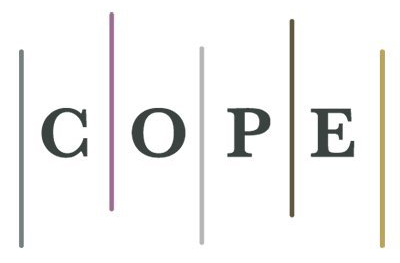Prevalencia y severidad de lactantes sibilantes en la ciudad de Córdoba
DOI:
https://doi.org/10.22529/Palabras clave:
medicina, pediatría, enfermedades respiratorias, pediatría, infecciones respiratorias, asma, lactantes, ibilancias.Resumen
Las sibilancias constituyen un síntoma respiratorio muy frecuente en los lactantes. La revalencia de sibilancias en lactantes, realizadas en países desarrollados tienen tasas de prevalencia que varían entre el 20% y el 30 %. El objetivo fue conocer prevalencia y severidad de sibilancias en los lactantes en la ciudad de Córdoba, conocer los factores de riesgo y de protección. Se utilizó un cuestionario escrito estandarizado (WQ-P1-EISL) en lactantes entre 12 y 18 meses de edad que residían en la ciudad de Córdoba. La prevalencia de lactantes sibilantes fue del 39,7%. En el presente estudio la prevalencia de sibilancias fue más baja de la esperada en relación a la media de Latinoamérica. Lo mismo observamos con severidad. Es dable destacar que los problemas respiratorios persistentes en los niños debidos al bajo nivel socioeconómico son un factor de riesgo para sibilancias, neumonía y podría ser un factor determinante para la prevalencia y severidad de SR en lactantes.Descargas
Referencias
Oostenbrink R, Piepers EM, Raat H, Nuijsink M, Landgraf JM, Essink-Bot ML, et al. Health-related quality of life of pre-school children with wheezing illness. Pediatr Pulmonol 2006; 41:993-1000. Ministério da Saúde (Brasil). Sistema de Informações Hospitalares do SUS - SIH/SUS/SE/Datasus, 2008 [acessado em 20 Set 2010]. Disponível em: http://tabnet.datasus.gov.br/cgi/tabcgi. Exe-idb2009/d13. https://doi.org/10.1002/ppul.20486
Bossio JC, Arias SJ. Mortalidad infantil en la Argentina. Arch Argent Pediatr 1999; 99:481-576.
Vinelli NF, Mannucci C, Laba NI, del Vecchio L, et al. Consultas no urgentes al Departamento de Urgencias de un Hospital pediátrico. Arch Argent Pediatr 2011; 109(1):8-13.
Vidaurreta SM at al. Infección respiratoria aguda viral en niños menores de 5 años. Estudio epidemiológico en dos centros de Buenos Aires, Argentina. Arch Argent Pediatr 2011; 109(4):296-304. https://doi.org/10.5546/aap.2011.296
Miyake Y, Tanaka K, Sasaki S, Kiyohara C, Ohya Y, Fukushima W, et al. Breastfeeding and the risk of wheeze and asthma in Japanese infants: the Osaka Maternal and Child Health Study. Pediatr Allergy Immunol 2008; 19(6):490-6. https://doi.org/10.1111/j.1399-3038.2007.00701.x
Wright, AL. Epidemiology of asthma and recurrent wheeze in childhood. Clin Rev Allergy Immunol 2002; 22(1):33-44. https://doi.org/10.1007/s12016-002-0004-z
Melen E, Kere J, Pershagen G, Svartengren M, Wickman M. Influence of male sex and parental allergic disease on childhood wheezing: role of interactions. Clin Exp Allergy 2004: 34: 839-44. https://doi.org/10.1111/j.1365-2222.2004.01957.x
Chong Neto HJ, Rosário NA; Grupo EISL Curitiba (Estudio Internacional de Sibilancias en Lactantes). Risk factors for wheezing in the first year of life. J Pediatr (Rio J) 2008; 84(6):495-502. https://doi.org/10.2223/JPED.1835
Rullo VE, Arruda LK, Valente V, Zampolo AS, Cardoso MR, Nóbrega FJ, et al. Allergen and endotoxin exposure, infection and breastfeeding in early infancy, and recurrent wheezing in children: 30-month follow-up of a cohort study. J Allergy Clin Immunol 2008; 121:S269. https://doi.org/10.1016/j.jaci.2007.12.1069
Mallol J, Andrade R, Auger F, Rodríguez J, Alvarado R, Figueroa L. Wheezing during the first year of life in infants from low-income population: a descriptive study. Allergol Immunopathol (Madr) 2005; 33(5):257-63. https://doi.org/10.1157/13080928
Bisgaard H, Szefler S. Prevalence of asthma-like symptoms in young children. Pediatr Pulmonol 2007; 42:723-8. https://doi.org/10.1002/ppul.20644
Kuehni CE, Strippoli MP, Low N, et al. Wheeze and asthma prevalence and related health-service use in white and South Asian pre-schoolchildren in the United Kingdom. Clin Exp Allergy 2007; 37:1738e46. https://doi.org/10.1111/j.1365-2222.2007.02784.x
Gillespie J, Wickens K, Siebers R, et al. Endotoxin exposure, wheezing, and rash in infancy in a New Zealand birth cohort. J Allergy Clin Immunol 2006: 118: 1265-70 https://doi.org/10.1016/j.jaci.2006.07.051
Pearce N, Aït-Khaled N, Beasley R, Mallol J, Keil U, Mitchell E, et al. Worldwide trends in the prevalence of asthma symptoms: phase III of the International Study of Asthma and Allergies in Childhood (ISAAC). Thorax 2007; 62(9):758-66. https://doi.org/10.1136/thx.2006.070169
Rullo VE, Arruda LK, Cardoso MR, Valente V, Zampolo AS, Nóbrega F, et al. Respiratory infection, exposure to mouse allergen and breastfeeding: role in recurrent wheezing in early life. Int Arch Allergy Immunol 2009; 150(2):172-8. https://doi.org/10.1159/000218120
Oddy WH, Sly PD, de Klerk NH, et al. Breast feed- ing and respiratory morbidity in infancy: a birth cohort study. Arch Dis Child 2003; 88: 224-8 https://doi.org/10.1136/adc.88.3.224
Snijders BE, Thijs C, Dagnelie PC, et al. Breast- feeding duration and infant atopic manifestations, by maternal allergic status, in the first 2 years of life (KOALA study). J Pediatr 2007; 151: 347-51. 351. https://doi.org/10.1016/j.jpeds.2007.03.022
Gergen PJ, Mullally DI, Evans R 3rd. National survey of prevalence of asthma among children in the United States, 1976 to 1980. Pediatrics 1988; 81(1):1-7
Abdulkadir B. Evaluation of Risk Factors for Recurrent Wheezing. J Clin Med Res 2013; 5(5):395-400
Juntti H, Osterlund P.Cytokine responses in cord blood predict the severity of later respiratorysyncytial virus infection. J Allergy Clin Immunol 2009; 124(1):52-58.e1-2. https://doi.org/10.1016/j.jaci.2009.04.014
Nuolivirta K, Helminen M. Mannose-binding lectin gene polymorphisms in infants with bronchiolitis and post-bronchiolitis wheezing. Allergol Int 2012; 61(2):305-9. https://doi.org/10.2332/allergolint.11-OA-0385
Azad MB, Kozyrskyj AL. Perinatal programming of asthma: the role of gut microbiota. Clin Dev Immunol 2012; 2012: 932072. https://doi.org/10.1155/2012/932072
Noakes PS, Holt PG, Prescott SL. Maternal smoking in pregnancy alters neonatal cytokine responses. Allergy 2003; 58(10):1053-8. https://doi.org/10.1034/j.1398-9995.2003.00290.x
Devulapalli CS, Carlsen KC, Håland G, Munthe-Kaas MC, Pettersen M, Mowinckel P, et al. Severity of obstructive airways disease by age 2 years predicts asthma at 10 years of age. Thorax 2008; 63(1):8-13. https://doi.org/10.1136/thx.2006.060616
Paternoster L, Standl M, et al: Metaanalysis of genome-wide association studies identifies three new risk loci for atopic dermatitis. Nat Genet 2012; 44: 187-192.
Taal HR, St Pourcain B, Thiering E, Das S, et al: Common variants at 12q15 and 12q24 are associated with infant head circumference. Nat Genet 2012; 44: 532-538. https://doi.org/10.1038/ng.2237
Keil T, McBride D, Grimshaw K, et al: The multinational birth cohort of EuroPrevall: background, aims and methods. Allergy 2010; 65: 482-490. https://doi.org/10.1111/j.1398-9995.2009.02171.x
McBride D, Keil T, Grabenhenrich L, et al: The EuroPrevall birth cohort study on food allergy: baseline characteristics of 12,000 newborns and their families from nine European countries. Pediatr Allergy Immunol 2012; 23: 230-239. https://doi.org/10.1111/j.1399-3038.2011.01254.x
Bousquet J, Anto J, at al: Pooling Birth Cohorts in Allergy and Asthma: European Union-Funded Initiatives -A MeDALL, CHICOS, ENRIECO, and GA 2 LEN Joint Paper. Int Arch Allergy Immunol 2013; 161:1-10. https://doi.org/10.1159/000343018
Taussig LM, Wright AL, Holberg CJ, Halonen M, Morgan WJ, Martinez FD. Tucson Children's Respiratory Study: 1980 to present. J Allergy Clin Immunol 2003; 111:661-75. https://doi.org/10.1067/mai.2003.162
Morgan WJ, Stern DA, Sherrill DL, Guerra S, Holberg CJ, Guilbert TW, et al. Outcome of asthma and wheezing in the first 6 years of life: follow- up through adolescence. Am J Respir Crit Care Med 2005; 172:1253-8. https://doi.org/10.1164/rccm.200504-525OC
Kurukulaaratchy RJ, Fenn MH, Waterhouse LM, Matthews SM, Holgate ST, Arshad SH. Characterization of wheezing phenotypes in the first 10 years of life. Clin Exp Allergy 2003; 33:573-8. https://doi.org/10.1046/j.1365-2222.2003.01657.x
Lowe LA, Simpson A, Woodcock A, Morris J, Murray CS, Custovic A, et al. Wheeze phenotypes and lung function in preschool children. Am J Respir Crit Care Med 2005; 171:231-7. https://doi.org/10.1164/rccm.200406-695OC
Lau S, Nickel R, Niggemann B, Gruber C, Sommerfeld C, Illi S, et al. The development of childhood asthma: lessons from the German Multi- centre Allergy Study (MAS). Paediatr Respir Rev 2002; 3:265-72 https://doi.org/10.1016/S1526-0542(02)00189-6
Simpson A, Tan VY, Winn J, Svensen M, Bishop CM, Heckerman DE, et al. Beyond atopy: multiple patterns of sensitization in relation to asthma in a birth cohort study. Am J Respir Crit Care Med 2010; 181:1200-6. https://doi.org/10.1164/rccm.200907-1101OC
Henderson J, Granell R, Heron J, Sherriff A, Simpson A, Woodcock A, et al. Associations of wheezing phenotypes in the first 6 years of life with atopy, lung function and airway responsiveness in mid-childhood. Thorax 2008; 63:974-80. https://doi.org/10.1136/thx.2007.093187
Savenije OE, Granell R, Caudri D, Koppelman GH, Smit HA, Wijga A, et al. Comparison of childhood wheezing phenotypes in 2 birth cohorts: ALSPAC and PIAMA. J Allergy Clin Immunol 2011; 127:1505-12.e14. https://doi.org/10.1016/j.jaci.2011.02.002
von Mutius E. Trajectories of childhood wheeze. J Allergy Clin Immunol 2011; 127:1513-4. https://doi.org/10.1016/j.jaci.2011.04.026
Martinez FD, Wright AL, Taussig LM, Holberg CJ, Halonen M, Morgan WJ. Asthma and wheezing in the first six years of life. The Group Health Medical Associates. N Engl J Med 1995; 332:133-8. https://doi.org/10.1056/NEJM199501193320301
Stein RT, Holberg CJ, Morgan WJ, Wright AL, Lombardi E, Taussig L, et al. Peak flow variability, methacholine responsiveness and atopy as markers for detecting different wheezing phenotypes in childhood. Thorax 1997; 52:946-52. https://doi.org/10.1136/thx.52.11.946
Mallol J, Garcia-Marcos L, Sole' D. International prevalence of recurrent wheezing during the first year of life: variability, treatment patterns and use of health resources. Thorax 2010; 65: 1004-1009. https://doi.org/10.1136/thx.2009.115188
Garcia-Marcos L, Mallol J, Solé D, Brand PLP and EISL group. International study of wheezing in infants: risk factors in affluent and non-affluent countries during the first year of life. Pediatr Allergy Immunol 2010; 21:878888. https://doi.org/10.1111/j.1399-3038.2010.01035.x
Bacharier LB, Boner A, Carlsen KH, Eigenmann PA, Frischer T, Götz M, et al. Diagnosis and treatment of asthma in childhood: a PRACTALL consensus report. Allergy 2008; 63(1):5-34. https://doi.org/10.1111/j.1398-9995.2007.01586.x
Wandalsen NF, Gonzalez C, Wandalsen GF, Solé D. Evaluation of criteria for the diagnosis of asthma using an epidemiological questionnaire. J Bras Pneumol 2009; 35(3):199-205. https://doi.org/10.1590/S1806-37132009000300002
Faniran AO, Peat JK, Woolcock AJ: Measuring persistent cough in children in epidemiological studies: development of a questionnaire and assessment of prevalence in two countries. Chest 1999; 115:434-439. https://doi.org/10.1378/chest.115.2.434
Mallol J, García-Marcos L, Aguirre V, Martinez-Torres A, Perez- Fernández V, Gallardo A, Calvo M, Rosario Filho N, Rocha W, Fischer G, BaezaBacab M, Chiarella P, Pinto R, Barria C. The International Study of Wheezing in Infants: questionnaire validation. Int Arch Allergy Immunol 2007; 144:44-50. https://doi.org/10.1159/000102613
Lillian S.L. Moraes, Olga A. Takano, Javier Mallol, Dirceu Solé. Risk factors associated with wheezing in infants. Pediatr (Rio J) 2013; 89(6):559-566. https://doi.org/10.1016/j.jped.2013.04.004
Kuehni CE, Strippoli MP, Low N, et al. Wheeze and asthma prevalence and related health-service use in white and South Asian pre-schoolchildren in the United Kingdom. Clin Exp Allergy 2007; 37:1738e46. https://doi.org/10.1111/j.1365-2222.2007.02784.x
Muiño A, Menezes AMB, Reichert FF, Duquia RP, Chatkin M. Padrões de sibilância respiratória do nascimento até o início da adolescência: corte de Pelotas (RS) Brasil, 1993-2004. J Bras Pneumol 2008; 34:347-55. https://doi.org/10.1590/S1806-37132008000600003
Lima JA, Fisher GB, Sarria EE, Matiello R, Solé D. Prevalência e fatores de risco para sibilância no primeiro ano de vida. J Bras Pneumol 2010; 36:52531. https://doi.org/10.1590/S1806-37132010000500002
van Merode T, Maas T, Twellaar M, Kester A, van Schayck CP. Genderspecific differences in the prevention of asthma-like symptoms in high-risk infants. Pediatr Allergy Immunol 2007; 18:196-200. https://doi.org/10.1111/j.1399-3038.2006.00513.x
Fagan JK, Scheff PA, Hryhorczuk D, Ramakrishnan V, Ross M, Persky V. Prevalence of asthma and other allergic diseases in an adolescent population: association with gender and race. Ann Allergy Asthma Immunol 2001; 86:177-84. https://doi.org/10.1016/S1081-1206(10)62688-9
Melen E, Kere J, Pershagen G, Svartengren M, Wickman M. Influence of male sex and parental allergic disease on childhood wheezing: role of interactions. Clin Exp Allergy 2004: 34:839-44. https://doi.org/10.1111/j.1365-2222.2004.01957.x
de Jong BM, van der Ent CK, van Putte KN, et al. Determinants of health care utilization for respiratory symptoms in the first year of life. Med Care 2007: 45:746-52. https://doi.org/10.1097/MLR.0b013e3180546879
Medeiros D, Silva AR, Rizzo JA, Sarinho E, Mallol J, Solé D. Silbidos prevalencia y factores de riesgo asociados en niños en el primer año de vida, viviendo en la ciudad de Recife. Pernambuco, Brasil. Cad Saude Publica 2011; 27:1551-9. https://doi.org/10.1590/S0102-311X2011000800010
Castro-Rodriguez JA, Holberg CJ, Wright AL, Martinez FD. A clinical index to define risk of asthma in Young children with recurrent wheezing. Am J Respir Crit Care Med 2000; 162:1403-6. https://doi.org/10.1164/ajrccm.162.4.9912111
Mommers M, Thijs C, Stelma F, Penders F, Reimerink J, van Ree R, et al. Timing of infection and development of wheeze, eczema, and sensitization during the first 2 years of life: the KOALA Birth Cohort Study. Pediatr Allergy Immunol 2010; 21:983-9 https://doi.org/10.1111/j.1399-3038.2010.01042.x
Ball TM, Castro-Rodriguez JA, Griffith KA, Holberg CJ, Martinez FD, Wright AL. Siblings, day-care attendance, and the risk of asthma and wheezing during childhood. N Engl J Med 2000; 343:538-43. https://doi.org/10.1056/NEJM200008243430803
Benicio MH, Ferreira MU, Cardoso MR, Konno SC, Monteiro CA. Wheezing conditions in early childhood: prevalence and risk factors in the city of Sao Paulo, Brazil. Bull World Health Organ 2004; 82:516-22. http://www.censo2010.indec.gov.ar
Holt PG, Sly PD. Viral infections and atopy in asthma pathogenesis: new rationales for asthma prevention and treatment. Nat Med 2012; 18:726-35. https://doi.org/10.1038/nm.2768
Holt PG, Rowe J, Kusel M, Parsons F, Hollams EM, Bosco A, et al. Toward improved prediction of risk for atopy and asthma among preschoolers: a prospective cohort study. J Allergy Clin Immunol 2010; 125:653-965. https://doi.org/10.1016/j.jaci.2009.12.018
Dela Bianca AC, Wandalsen GF, Mallol J, Solé D. Risk factors for wheezing disorders in infants in the first year of life living in São Paulo. Brazil J Trop Pediatr 2012; 58:501-4. https://doi.org/10.1093/tropej/fms016
Sarria E, Fischer GB, Lima JA, Menna Barreto SS, Flôres JA, Sukiennik R. Interobserver agreement in the radiological diagnosis of lower respiratory tract infections in children [Article in Portuguese]. J Pediatr (Rio J) 2003; 79(6):497-503. https://doi.org/10.2223/JPED.1109
Programa Nacional de Infecciones Respiratorias Bajas. www.msal.gov.ar. Dirección de Estadística e Información de Salud. Ministerio de Salud y Ambiente, año 2003.
Boletín de la Administración Nacional de Laboratorios e Instituto de Salud Dr. Carlos Malbrán. Instituto Nacional de Enfermedades Respiratorias Emilio Coni. PRO.ERI. 03/05.
De Sarrasqueta P, Hidalgo S, Siminovich M, Barbosa P, Gamba L, García Arrigoni P, Berberian G. Mortalidad posneonatal por infecciones respiratorias bajas. Antecedentes adversos de la salud y fallas en el 48 proceso de atención. Medicina Infantil. Rev Pediatr Hospital Garrahan 1993; (1):10-14
Speranza AM, Orazi V, de Sarasqueta P. Programa Nacional de Infecciones Respiratorias Agudas Bajas. Hospitalización abreviada. Arch Argent Pediatr 2005; 103(2):282-87.
Moraes LM, Mallol J, Solé D. Risk factors associated with wheezing in infants. J Pediatr (Rio J) 2013; 89(6):559-566. https://doi.org/10.1016/j.jped.2013.04.004
Pellegrini-Belinchón J, Miguel-Miguel G, De Dios-Martin B, Vicente-Galindo E, Lorente-Toledano F, Garcia-Marcos L. Study of wheezing and its risk factors in the first year of life in the Province of Salamanca. Spain The EISL Study Allergol Immunopathol (Madr) 2012; 40:164-71. https://doi.org/10.1016/j.aller.2011.03.014
Baena-Cagnani CE, Gómez RM, Baena-Cagnani R, Canonica GW Impact of environmental tobacco smoke and active tobacco smoking on the development and outcomes of asthma and rhinitis. Curr Opin Allergy Clin Immunol 2009; 9(2):136-40. https://doi.org/10.1097/ACI.0b013e3283294038
Burke H, Pine-Abata H, Chen Y, Cook DG, et al. Prenatal and passive smoke exposure and incidence of asthma and wheeze: systematic review and meta-analysis. Pediatrics 2012; 129:735-44. https://doi.org/10.1542/peds.2011-2196
Bueso A, Figueroa M, Hoyos W, Martinez-Torres AE, Mallol J, et al. Poverty-associated risk factors for wheezing in the first year of life in Honduras and El Salvador. Allergol Immunopathol (Madr) 2010; 38:203-12. https://doi.org/10.1016/j.aller.2010.01.003
Nordling E, Berglind N, Melen E, Emenius G, Hallberg J, Nyberg F, et al. Traffic-related air pollution and childhood respiratory symptoms, function and allergies. Epidemiology 2008; 19:401-8. https://doi.org/10.1097/EDE.0b013e31816a1ce3
Menezes AM Caesarean sections and risk of wheezing in childhood and adolescence: data from two birth cohort studies in Brazil. Clin Exp Allergy 2011; 41(2):218-23. https://doi.org/10.1111/j.1365-2222.2010.03611.x












